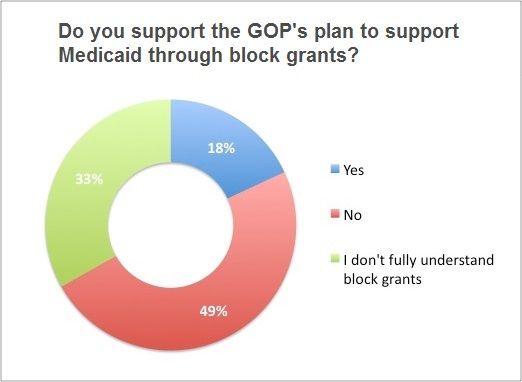Article
5 Things to Know About Block Grants in Medicaid
Author(s):
Now that the Senate has confirmed US Rep. Tom Price, R-Georgia, as HHS secretary, Republicans will start to look toward making changes to the Affordable Care Act and Medicaid. Here is a look at block grants, which the GOP is considering using to reform the Medicaid program.
Now that the Senate has confirmed US Rep. Tom Price, R-Georgia, as HHS secretary, Republicans will start to look toward making changes to the Affordable Care Act and Medicaid. House Speaker Paul Ryan, R-Wisconsin, has expressed interest in changing Medicaid, and one potential change has been to implement block grants.
Recently, The American Journal of Managed Care® polled readers and found that while 49% of respondents do not agree with the GOP’s plan to fund Medicaid through block grants, 33% admitted that they don’t fully understand what block grants are.

Here are 5 things to know about block grants.
1. President Donald Trump proposed block grants in his campaign
While Trump had mentioned block grants as part of his plan to reform healthcare during his campaign, it has been a longtime strategy of interest for the GOP. Since Trump has entered the White House and Republicans hold both chambers of Congress, the idea has garnered more attention.
Price has previously supported converting Medicaid into a block grant.
2. So how do they work?
Block grants are a lump sum from the federal government that is provided to the states. The plan caps what the federal government spends on Medicaid each year. The fixed spending is based on the state and federal spending and would grow each year to account for inflation.
3. The pros and cons
Currently, states must cover certain services and people. However, under a block grant, states would be given more flexibility to design their own Medicaid program. States could decide who is eligible for the program and what services are covered. Avalere Health recently published an analysis that found block grants could save the federal government $150 billion by 2022.
Unfortunately, these savings might mean gaps in services. In addition, while the block grant amount grows yearly with inflation adjustments, medical inflation is often higher and so the growth in block grants is unlikely to keep up. As of now, it is expected that North Dakota is the only state that would receive an increase in funding under the block grant model, while the rest of the states and the District of Columbia would see a decrease in funding.
4. Opposition to block grants is growing
Opposition to block grants has been gaining momentum, first with hospitals, insurers, and doctors expressing concerns, and recently with AARP, the largest lobby for seniors. AARP’s senior vice president of government affairs, Joyce Rogers, wrote a letter to the members of the US House Energy and Commerce Committee outlining why the organization is opposed to block grants.
“A block grant would end the guaranteed access to care for millions of Americans who are eligible and instead provide a fixed amount of federal funding to each state for its Medicaid program, which may not take into account increases in actual cost or need,” Rogers wrote.
Families USA, an advocacy organization, has said that block grants would be “a bad idea of Medicaid” and would ultimately mean cuts in services.
5. Republicans may be shifting away from block grants
There’s an alternative to block grants that may be more popular: per capita cap model. The Avalere analysis found that this model, which is also a favorite among the GOP members, will save the government a little less ($110 billion over 5 years), but is not quite as limiting as the block grant model.
Under per capita caps, a per-person payment for each eligibility category in Medicaid would be established. The federal government would make payments to the states based on the number of enrollees they have and those payments would be based on historical spending rates.





